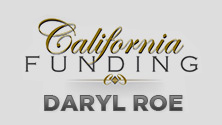Refinance Loans
Refinances are available in many shapes and sizes.
First of all, to explain, a “refinance” in the eyes of a lender is whenever you already own the property and are financing it with a new loan (even if owned free & clear).
The amount of the refinance dollars available will be determined by your property’s value, your credit worthiness (credit history and current ratings) and your ability to handle the new payments(“qualify”) in the lender’s judgment. If these items are put in perspective, then all that remains is to choose one of the many loan programs available, some of which include:
An FHA refinance “cash out” to 85% of value or “no cash out” to approximatly 97% of value (within its maximum allowable loan limit, of course). A conforming conventional refinance generally allows “cash out” to 75% and “no cash out” to 80% (though higher LTV’s are available in special programs.) A non-conforming (or “jumbo”) conventional refinance “cash out” depending on loan amount, allows from 65% to 75% “no cash out”; again depending on loan amount, from 70% to 80%.
Refinances are done for many reasons, which might include:
- lowering current interest rate
- lowering or sometimes extending the term
- to obtain cash for any number of reasons
- to pay off a second trust deed
- to “blend the rate” of a first and second trust deed
- to settle property matters in a separation or divorce
- to pay off a former partner and take them off title.
Anything that is legal and does not cause additional, unknown obligations is usually acceptable to the lender.
If you are able to lower your current rate and “recover” the cost within a reasonable amount of time, refinancing could be a wise move. For example, say you are able to reduce your P & I (principal and interest) payment by $100 per month and the loan costs totaled $2400, you would recoup these costs in 24 months. After that time, the savings goes in your pocket – if you plan on keeping the property more than 24 months, it would make sense to refinance.
Maybe you are now in a position to shorten the term of your loan and take advantage of lower interest rates offered for 15-year amortization vs. 30-year amortization.
You can save thousands of dollars by paying on a 15-year basis compared to a 30 year. For example, $100,000 at 6.5% for 15 years = $871.15 X 15 years = $156,798.89. At 7.0% for 30 years = $665.31 X 30 years =$239,510.98. Total savings over the term = $82,712.09; Or, conversely, a person may wish to refinance to restructure from a 15-year to a 30-year loan. Maybe income has changed, and the 15-year payment is just too hard to handle or maybe the additional cash flow is needed every month for another purpose (such as expanding a business, etc.).
As mentioned previously, a lender’s concern, beyond legalities, is that a borrower can reasonably be expected to be able to pay back the new loan, not in how the cash will be used. A person may use their property as security to obtain funds at more reasonable rates than, say, a personal, unsecured loan or a loan against a credit card.
